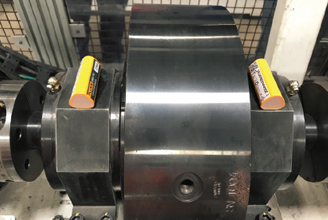- By Kevin Clark
- March 31, 2020
- Channel Chat
Summary
By Kevin D. Clark, CMRP
It has been around for decades and will continue to be the way we generate the data needed to maintain our assets. But “condition monitoring” as a term does not seem to be cool or sexy anymore. Or perhaps its significance is getting lost as companies seek to do more with less and shift to new systems and processes.
As predictive maintenance grows in practice and paper-based workflows increasingly give way to Industrial Internet of Things (IIoT) platforms and other Industry 4.0 technologies, people want to downplay “condition monitoring” or give it a makeover. Many maintenance pros today would rather call it “asset health” or gloss over it as an incidental step to predictive maintenance. To some, it sounds so…yesterday.

Why do I care about the term? Perhaps because it is such a critical step, representing the basic, fundamental tenet of any maintenance strategy. You start with condition monitoring, first, and then determine asset health—which calls for a deeper analysis of the data you capture.
Condition monitoring provides the baseline data through which maintenance teams can move toward predictive maintenance and forecasting and, ultimately, figure out what asset health looks like. We require this information whether we implement advanced technology or keep inspecting assets with paper, pen, and spreadsheets.
Increasingly, companies are enhancing their systems with IIoT plus machine learning and artificial intelligence. Predictive maintenance is where most organizations want to be. However, without reliable asset condition data, these systems are doomed to expensive failures. To help companies successfully navigate the shift to predictive maintenance, I recommend adhering to these basic steps:
- Be clear on what condition monitoring is and what it entails (even if you do not like the term). Technology is not what drives condition monitoring. It can be done without a single bit of technology, as it was done in time-consuming fashion in the past (or present). Condition monitoring is tracking the condition of an asset through various means, understanding the condition data you compile, and then potentially acting on it—on a conditional basis, not on a scheduled basis. View it as the layer below asset health. Too many people today just want to determine when an asset will fail. Condition monitoring entails tracking the condition of an asset throughout its life, then assessing the data for what it is telling you.
- Know what data you need to capture. Many organizations want to jump right into predictive maintenance from preventive or reactive strategies. They will fail without knowing what type of data to collect from their assets. What kind of assets are you tracking? Vibration monitoring and analysis, for example, makes a lot of sense for rotating machinery. But electrical performance, temperature monitoring, oil analysis, or thermal imaging might as well. To understand when that motor might fail, you might need to monitor current, temperature, and vibration to get the full scope of what you must know.
- Learn what technology best supports your data collection. Surprisingly, this may be easier than step 2 if you have thought through what data you need to capture. Fluke Reliability and its competitors have designed sensors and connecting software to go with the computerized maintenance management system or enterprise asset management software you may have in place. These support a wide range of data capture. Also, do you have Wi-Fi? This may affect what types of sensors you can support.
Vendors offer systems to diagnose and analyze data and provide actionable insights. But you cannot go straight to step 3 without doing step 2. Why? Because doing it wrong can set you back. You will go wrong if you are: collecting the wrong data, or insufficient data; not understanding the magnitude of the data (e.g., dwelling on whether or when an asset will fail, rather than its actual condition and health); or spending too little on systems for mission-critical assets or too much on those for noncritical assets.
Now then, maybe your goal—or your executive management’s goal or your client’s goal—is not predictive maintenance. That is okay for now. My advice is still to put condition monitoring back into your vocabulary and recognize its long-term criticality. It is the linchpin to any successful maintenance strategy.
Reader Feedback
We want to hear from you! Please send us your comments and questions about this topic to InTechmagazine@isa.org.


